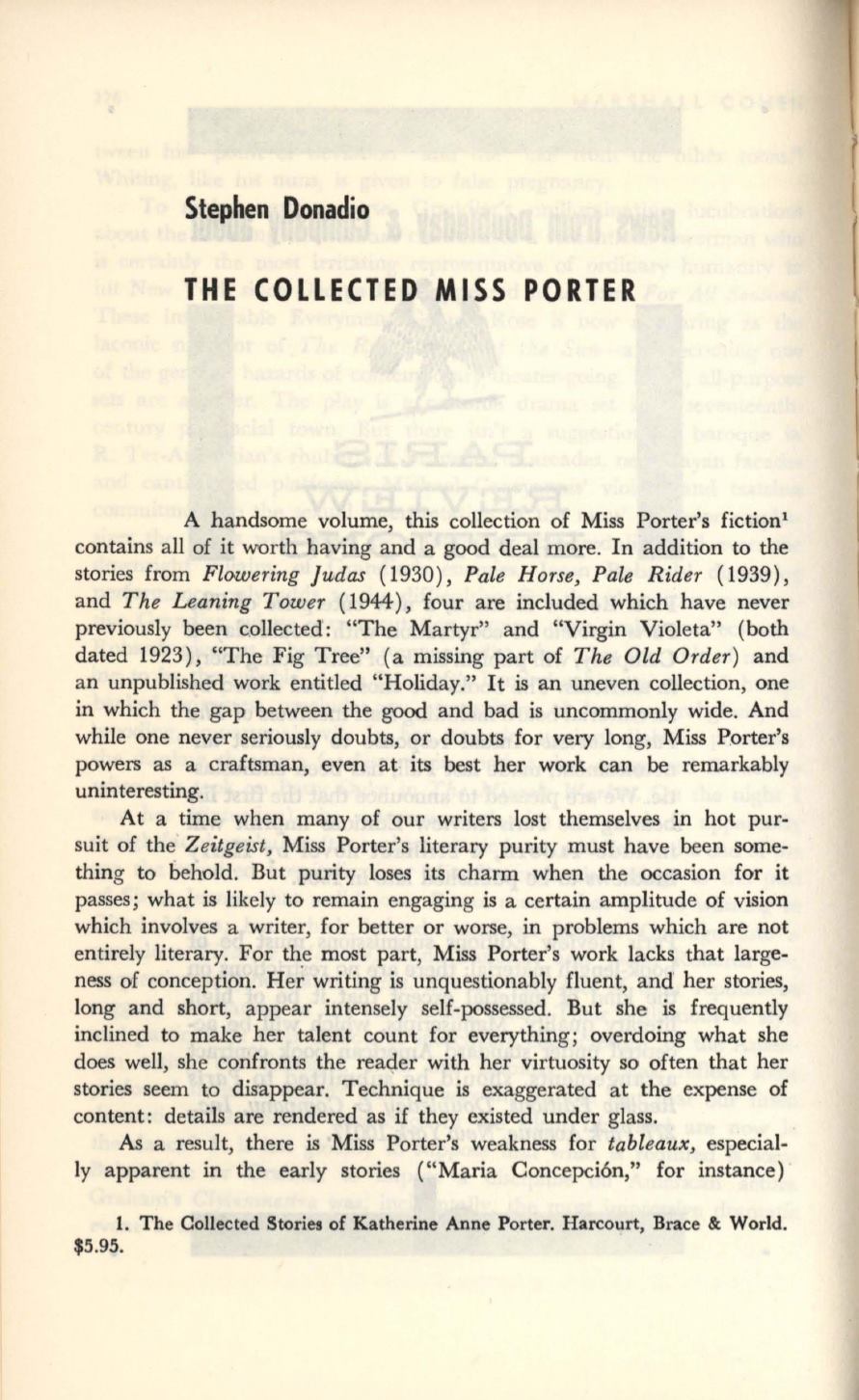
Stephen Donadio
THE COLLECTED MISS PORTER
A handsome volume, this collection of Miss Porter's fiction
1
contains all of it worth having and a good deal more. In addition to the
stories from
Flowering Judas
(1930),
Pale Horse, Pale Rider (1939),
and
The Leaning Tower
(1944), four are included which have never
previously been c,ollectea: "The Martyr" and "Virgin Violeta" (both
dated 1923), "The Fig Tree" (a missing part of
The Old Order)
and
an unpublished work entitled "Holiday." It is an uneven collection, one
in
which the gap between the good and bad is uncommonly wide. And
while one never seriously doubts, or doubts for very long, Miss P,orter's
powers as a craftsman, even at its best her work can be remarkably
uninteresting.
At a time when many of our writers lost themselves in hot pur–
suit of the
Zeitgeist,
Miss Porter's literary purity must have been some–
thing to behold. But purity loses its charm when the occasion for it
passes; what is likely to remain engaging is a certain amplitude of vision
which involves a writer, for better or worse, in problems which are not
entirely literary. For the most part, Miss Porter's work lacks that large–
ness of conception.
He~
writing is unquestionably fluent, and her stories,
long and short, appear intensely self-possessed. But she is frequently
inclined to make her talent count for everything; overdoing what she
does well, she confronts the reaQer with her virtuosity so often that her
stories seem to disappear. Technique is exaggerated at the expense of
content: details are rendered as if they existed under glass.
As
a result, there is Miss Porter's weakness for
tableaux,
especial–
ly apparent in the early stories ("Maria Concepcion," for instance)
1.
The Collected Stories of Katherine Anne Porter. Harcourt, Brace
&
World.
$5.95.


